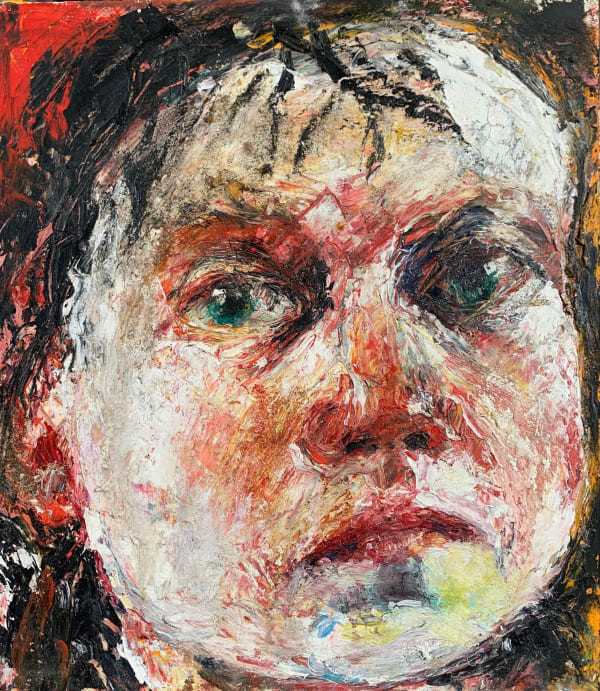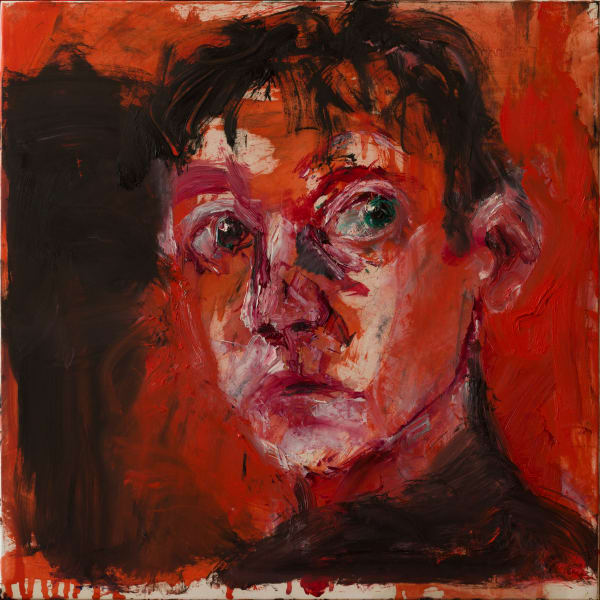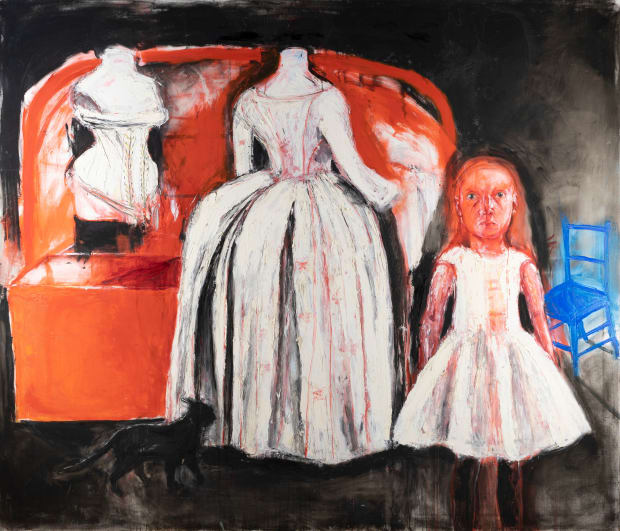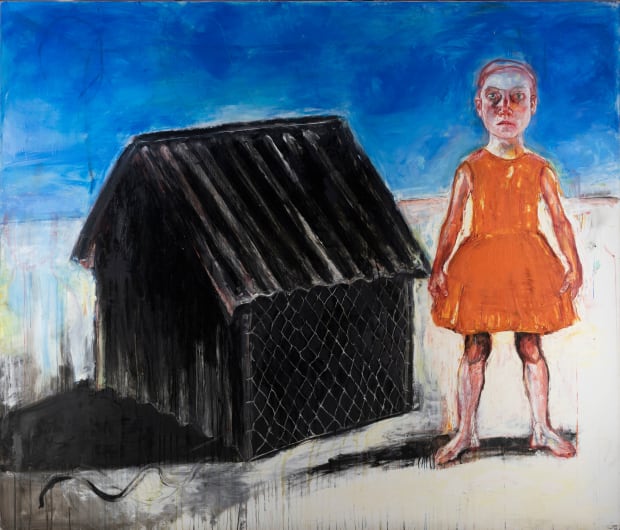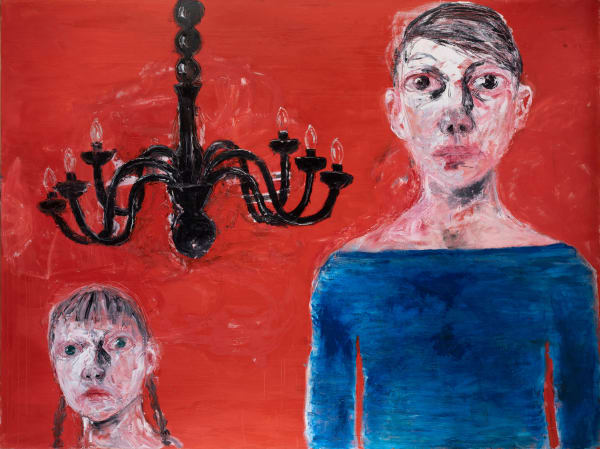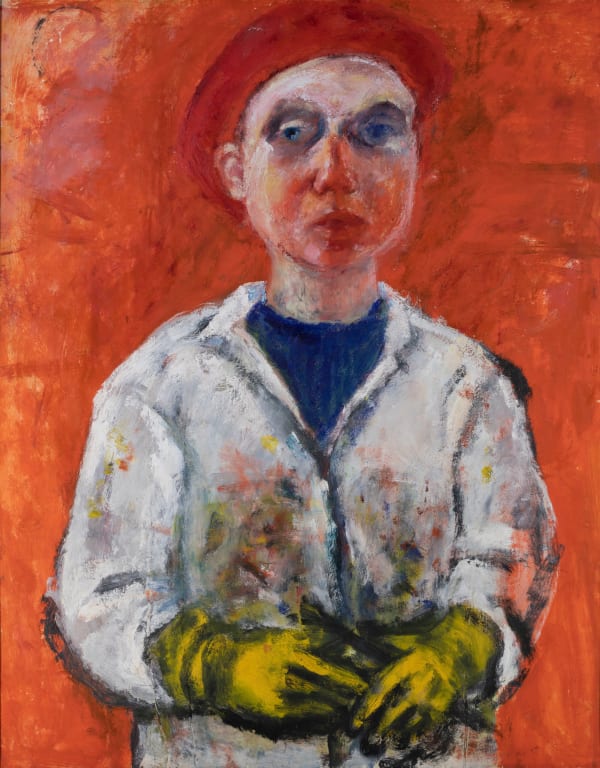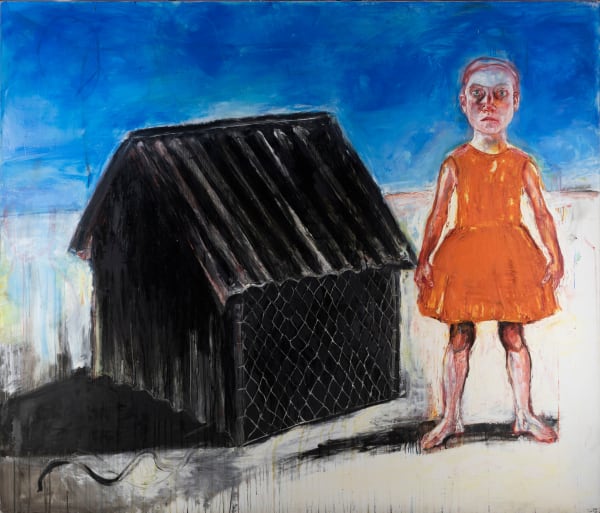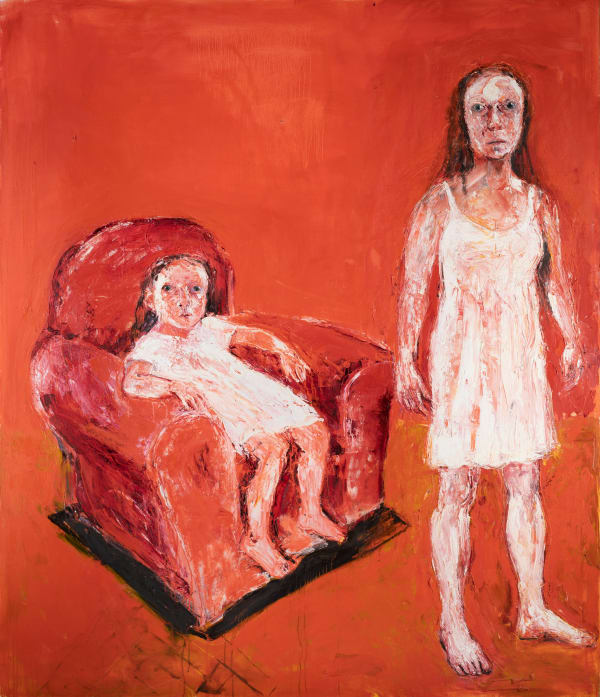-
Bringing together seven of her early large scale paintings and major later works, this exhibition charts the trajectory of one of Britain’s leading and most iconic contemporary female painters in celebration of her 70th birthday.
These works are a testament to Rhys James’ longstanding commitment to figurative art and the materiality of paint. Alongside more recent works, the paintings exhibited reveal her engagement with the nature of femininity, domesticity, motherhood, and artistry itself.
Drawing on the artist’s own fascination with the transience of being, Shani Rhys James at 70 is reflection of her life and career, highlighting her timeless appeal and ability to charge the canvas with emotion. -
-
-
I DON'T NORMALLY HAZARD PREDICTIONS ABOUT POSTERITY, BUT OF THIS I'M CERTAIN. SHANI RHYS JAMES WILL BE REMEMBERED WHEN MANY OF HER BETTER KNOWN CONTEMPORARIES ARE FORGOTTEN, BECAUSE SHE IS A TRUE ORIGINAL.
Laura Gascoigne, Art critic: Spectator, Apollo, RA magazine
-
 Shani Rhys James, Red Beret, 1991
Shani Rhys James, Red Beret, 1991 -
Shani Rhys James' paintings are not for the fainthearted. Her large canvases embody the dark and potent tensions buried in family relationships. Things unsaid, emotional dislocation and fear and anxiety are all expressed in a bravura expression of bold colour and skilful painterly force. She is a painter's painter.
Susan Daniel McElroy, Curator, former Tate St Ive and Scottish Art Council director
-
 Shani Rhys James, The Ladder, 1993
Shani Rhys James, The Ladder, 1993 -
Rhys James has described looking at the human head in the same way that Cezanne looked at Mont Sainte-Victoire, approaching the face as a landscape. In this process, she often sections the head into parts using a hand mirror to study each section in detail.
Her self-portraits reveal a deeply expressive way of working. She emphasises the physicality of the paint, focusing on her brushwork in an almost abstract way. Her aim is to draw the figure out from the layers of paint - “making the paint become the flesh”, as she puts it. Through this approach, her technique becomes part of the narrative rather than just the means by which facial expressions are captured. -
Shani, by revealing and concealing an inner world, has made a singular contribution to the tradition of self portraiture
Tessa Jackson OBE, Founder of Artes Mundi, former Arnolfini and Scottish Arts Council director
-
 Shani Rhys James, The Inner Room, 1999
Shani Rhys James, The Inner Room, 1999 -
It’s that resigned, clear-eyed look she turns on herself in exuberantly painted domestic settings which threaten to swallow her up which is so original. She paints the female condition.
Frances Borzello, PhD, Art historian and scholar | Author: 'Seeing Ourselves: Women's Self-Portraits'
-
 Shani Rhys James, Chicken Coop III, 1999
Shani Rhys James, Chicken Coop III, 1999 -
 Shani Rhys James, Red Ground, 2003
Shani Rhys James, Red Ground, 2003 -
“Shani Rhys James has come to us like a breath of fresh air that blows away so many of the stagnant theories that burden the art of our times”
Sir Kyffin Williams, renowned artist
-
 Shani Rhys James, Blue Top, 2013
Shani Rhys James, Blue Top, 2013 -
-
-
-
Critics and curators on shani:
“Shani at 70! It’s hard to believe. Shani has such strength and vitality in her work, looking back over the years her work now reflects all ages of woman. Always finding new ways to express the intensely personal and infinitely universal.
Congratulations Shani! Bravo, and many many more. Look forward to seeing Shani at 80 and 90 as she tells her stories in fresh and important ways.”
Steffan Jones Hughes: curator at Oriel Davies Gallery
“I've lingered over Shani's artworks for many years, fascinated by her intriguing and multi-layered worlds of domestic interiors and self-portraits all fleshed out in provocative colour, which can charm and disturb in equal measure, I simply love her work.”
PL Henderson: feminist art historian and author
"Woven through her female-centred family dramas are references to literature, fairy tales and personal stories, which intertwine to show the complexities of femininity. Wild wallpapers, beautiful bouquets, climbing shadows and sharp-toothed combs recur in Rhys James’ symbolic canvases, accompanying her watchful heroines who rattle their gilded cages. However, the artist’s most compelling subject is herself; in triumphant self-portraits Shani Rhys James asserts herself as a great and disruptive painter who is changing art history.”
Ruth Millington: critic and writer | Author of 'Muse'
I FIRST SAW A PAINTING BY SHAN RHYS JAMES IN 1987 [YELLOW GLOVES]. I REMEMBER CLEARLY THE EXCITEMENT I FELT THAT DAY, AND THE INSTANT REALISATION THAT A NEW AND POWERFUL VOICE HAD EMERGED. THROUGHOUT THE SUBSEQUENT DECADES, I HAVE NEVER FAILED TO BE MOVED BY THE WORK OF AN ARTIST WHO HAS PRESENTED TO THE WORLD IMAGES OF UNIQUE INTENSITY, GREAT BEAUTY, AND DEEP HUMANITY.
Peter Lord, author





